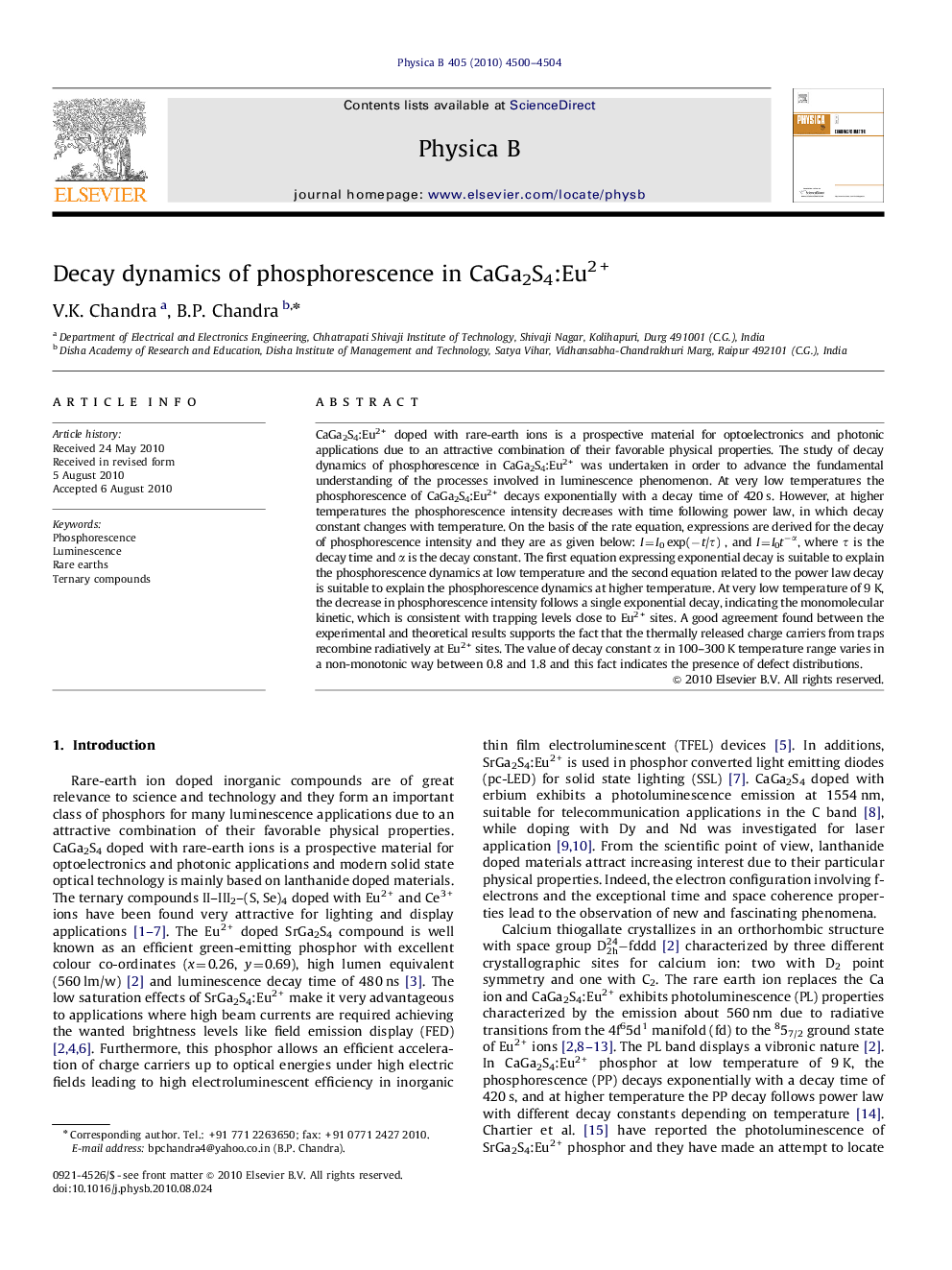| Article ID | Journal | Published Year | Pages | File Type |
|---|---|---|---|---|
| 1811448 | Physica B: Condensed Matter | 2010 | 5 Pages |
Abstract
CaGa2S4:Eu2+ doped with rare-earth ions is a prospective material for optoelectronics and photonic applications due to an attractive combination of their favorable physical properties. The study of decay dynamics of phosphorescence in CaGa2S4:Eu2+ was undertaken in order to advance the fundamental understanding of the processes involved in luminescence phenomenon. At very low temperatures the phosphorescence of CaGa2S4:Eu2+ decays exponentially with a decay time of 420 s. However, at higher temperatures the phosphorescence intensity decreases with time following power law, in which decay constant changes with temperature. On the basis of the rate equation, expressions are derived for the decay of phosphorescence intensity and they are as given below: I=I0 exp(ât/Ï) , and I=I0tâα, where Ï is the decay time and α is the decay constant. The first equation expressing exponential decay is suitable to explain the phosphorescence dynamics at low temperature and the second equation related to the power law decay is suitable to explain the phosphorescence dynamics at higher temperature. At very low temperature of 9 K, the decrease in phosphorescence intensity follows a single exponential decay, indicating the monomolecular kinetic, which is consistent with trapping levels close to Eu2+ sites. A good agreement found between the experimental and theoretical results supports the fact that the thermally released charge carriers from traps recombine radiatively at Eu2+ sites. The value of decay constant α in 100-300 K temperature range varies in a non-monotonic way between 0.8 and 1.8 and this fact indicates the presence of defect distributions.
Related Topics
Physical Sciences and Engineering
Physics and Astronomy
Condensed Matter Physics
Authors
V.K. Chandra, B.P. Chandra,
